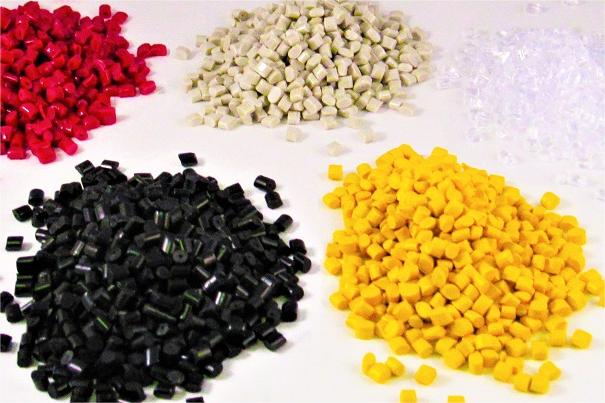Injection molding
- Free molds design
- Rapid tooling
- Assembly support
- Cost-effictive for volume production
Injection molding is a manufacturing process for producing plastic parts by injecting molten plastic into a mold cavity. The mold cavity is the negative image of the desired part. The molten plastic is cooled and solidified in the mold, and then ejected. Injection molding is a very versatile process that can be used to produce a wide variety of parts, from simple to complex.
Tolerance
we can achieve as tight as 0.01 mm. For unspecified size, we will generally quote and machine as per ISO-2768 f (below table).
| Permissible deviations in mm for ranges in nominal lengths | Tolerance class designation (description) | |||
| f (fine) | m(medium) | c(coarse) | v(very coarse) | |
| 0.5 up to 3 | ±0.05 | ±0.1 | ±0.2 | / |
| over 3 up to 6 | ±0.05 | ±0.1 | ±0.3 | ±0.5 |
| over 6 up to 30 | ±0.1 | ±0.2 | ±0.5 | ±1.0 |
| over 30 up to 120 | ±0.15 | ±0.3 | ±0.8 | ±1.5 |
| over 120 up to 400 | ±0.2 | ±0.5 | ±1.2 | ±2.5 |
| over 400 up to 1000 | ±0.3 | ±0.8 | ±2.0 | ±4.0 |
| over up 1000 to 2000 | ±0.5 | ±1.2 | ±3.0 | ±6.0 |
| over up 2000 to 4000 | / | ±2.0 | ±4.0 | ±8.0 |
| Permissible deviations in mm for ranges in nominal lengths | Tolerance class designation (description) | |||
| f (fine) | m(medium) | c(coarse) | v(very coarse) | |
| 0.5 up to 3 | ±0.2 | ±0.2 | ±0.4 | ±0.4 |
| over 3 up to 6 | ±0.5 | ±0.5 | ±1.0 | ±1.0 |
| over 6 | ±1.0 | ±1.0 | ±2.0 | ±2.0 |
| Permissible deviations in degrees and minutes for ranges in nominal length | Tolerance class designation (description) | |||
| f (fine) | m(medium) | c(coarse) | v(very coarse) | |
| up to 10 | ±1º | ±1º | ±1º30′ | ±3º |
| over 10 up to 50 | ±0º30′ | ±0º30′ | ±1º | ±2º |
| over 50 up to 120 | ±0º20′ | ±0º20′ | ±0º30′ | ±1º |
| over 120 up to 400 | ±0º10′ | ±0º10′ | ±0º15′ | ±0º30′ |
| over 400 | ±0º5′ | ±0º5′ | ±0º10′ | ±0º20′ |
Materials Used in Injection Molding
The most common materials used in injection molding are thermoplastics. Thermoplastics are materials that can be melted and resolidified without changing their chemical properties. Some of the most common thermoplastics used in injection molding include:
- Polyethylene (PE): PE is a lightweight and versatile thermoplastic that is used in a wide variety of products, including bags, bottles, and toys.
- Polypropylene (PP): PP is a strong and durable thermoplastic that is used in a wide variety of products, including food packaging, automotive parts, and medical devices.
- Polystyrene (PS): PS is a lightweight and shatterproof thermoplastic that is used in a wide variety of products, including food packaging, cups, and insulation.
- Polyvinyl chloride (PVC): PVC is a versatile thermoplastic that can be made soft or hard. It is used in a wide variety of products, including pipes, tubing, and flooring.
- Acrylonitrile butadiene styrene (ABS): ABS is a strong and durable thermoplastic that is used in a wide variety of products, including luggage, helmets, and automotive parts.

Let's make something significant today!
Types of Injection Molding
There are many different types of injection molding, each with its own advantages and disadvantages. Some of the most common types include:
- Conventional injection molding: This is the most basic type of injection molding, and it is used to produce a wide variety of parts.
- Multi-component injection molding: This type of injection molding is used to produce parts with two or more different materials.
- Gas-assisted injection molding: This type of injection molding is used to produce parts with complex geometries or hollow cores.
- Insert injection molding: This type of injection molding is used to produce parts with metal or ceramic inserts.
Strengths of Injection Molding
Injection molding has many strengths, including:
- High precision: Injection molding can produce parts with very high precision. This is because the mold cavity is the negative image of the desired part.
- High repeatability: Injection molding is a very repeatable process. This means that parts can be produced over and over again with consistent quality.
- High production rates: Injection molding is a very fast process. It can produce parts at very high rates, making it ideal for mass production.
- Wide range of materials: Injection molding can be used to process a wide range of materials, including thermoplastics, thermosets, and elastomers.
Injection molding is a very versatile and powerful manufacturing process. It can be used to produce a wide variety of parts, from simple to complex, with high precision and repeatability. Injection molding is also a very fast process, making it ideal for mass production.